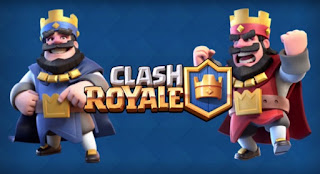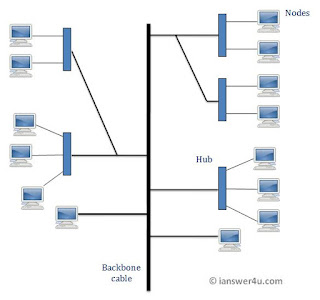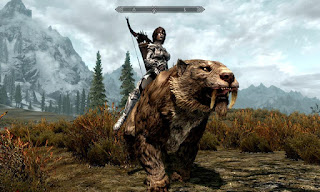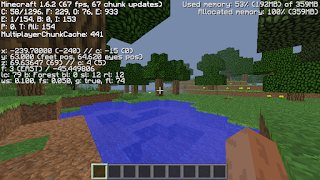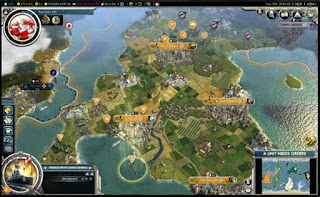Microprocessor is an IC (Integrated Circuit) which is used as a brain / main processor in a computer system. Microprocessors are the result of the growth of the semiconductor. First microprocessor was introduced in 1971 by Intel Corp, namely the Intel 4004 microprocessor which has a 4 bit architectures. With the addition of some peripherals (memory, device I / O, etc.) Microprocessor 4004 transformed into a small computer by intel.
The microprocessor then developed further into 8080 (8bit architecture), 8085, and then 8086 (16bit architecture). On the other hand other semiconductor companies also introduced and developed a Motorola microprocessor include the M6800, and Zilog with Z80nya. Microprocessor 16 bit Intel architecture is mostly in the end by the number 86, but because the number can not be used to replace it with their trademark for the name Pentium microprocessors trademarks of their fifth generation.
This architecture has twice expanded to accommodate a larger word size. In 1985, Intel announced the design of next-generation 32-bit 386 which replaces the draft 286 16-bit generation. 32-bit architecture is known as x86-32 or IA-32 (stands for Intel Architecture, 32-bit). Then in 2003, AMD introduced the Athlon 64, which apply further development of this architecture leading to a 64-bit architecture, known by several terms x86-64, AMD64 (AMD), EM64T or IA-32e (Intel), and x64 (Microsoft).
To view the history of the development of the electronic components can be seen below:
1904: Diodes tube was first created by a scientist from the UK named Sir John Ambrose Fleming (1849-1945)
1906: The results found triode tube diode development by an American scientist named Dr. Lee De Forest. Which then creates tetroda and pentode.
However, the use of vacuum tubes that are misaligned in 1960 after the discovery of semiconductor components.
1947: Transistor invented at Bell laboratories.
1965: Gordon Moore from Fairchild Semiconductor in an article for Electronics magazine says that growing a semiconductor chip doubles every two years for more than three decades.
1968: Moore, Robert Noyce and Andy Grove found the Intel Corp. to run a business "INTegrated ELectronics."
1969: Intel announces its first product, the static RAM 1101, metal oxide semiconductor (MOS), first in the world. It signals the end of an era magnetic memory.
1971: 4004 Microprocessor
In 1971 comes the first microprocessor Intel 4004 microprocessor is used on the machine calculator Busicom. With these discoveries, then opened the way to incorporate artificial intelligence in inanimate objects.
1972: 8008 Microprocessor
In 1972 comes the 8008 microprocessor that powered two times that of its predecessor, namely 4004.
1974: 8080 Microprocessor
Being the brain of a computer called the Altair, when it sold about ten thousand in one month.
1978: 8086-8088 Microprocessor
An important sales in the computer division occurs in the product for personal computers that use processors made by IBM 8088 which managed to boost intel name.
1982: 286 Microprocessor
Intel 286 or better known by the name 80286 is a processor that was first able to recognize and use the software used for the previous processor.
1985: Intel386 ™ Microprocessor
Intel 386 is a processor that has an embedded diprosessor 275,000 transistors such that when compared with 4004 has 100 times more compared to 4004
1989: Intel486 ™ DX CPU Microprocessor
Intel i486 processor is the first with over 1 million transistors. Previously known generation XT i186, i286 AT followed by generation, i386 to i486. i486 with a 32 bit chip works with a clock up to 100MHz. i486 marketed to mid 90s.
Processor for the first time allows various applications that previously had to type the command-command to be just a click away, and has a complex mathematical function so as to minimize the workload on the processor.
1993: Intel® Pentium® Processor
The next generation is better known as the i586 Pentium I with more than 3 million transistors. This chip stores a bug. Pentium running with the most severe mistakes in history. The new generation of processors that can handle various types of data such as voice, sound, handwriting and photos.
1995: Intel® Pentium® Pro Processor
Processor is designed for use on server and workstation applications, created to process data quickly, this processor has 5.5 Million transistors are embedded.
1997: Intel® Pentium® II Processor
The next development was born Pentium II with a clock up to 450 MHz and holds approximately 7.5 million transistors are integrated with the cache level 2 (L2). Pentium II processor is a processor that incorporates Intel MMX is designed specifically to process video data, audio, and graphics efficiently. There are 7.5 million transistors integrated in it so that with this processor PC users can process a variety of data and use the internet better.
1998: Intel Pentium II Xeon Processor
Economical Celeron processor with a base of Pentium II, but without the availability of level 2 cache (L2). This is known as Pentium Processor II Celeron.Processor made for the needs of the application server. Intel when it wants to meet its strategy that wants to provide a unique processor for a particular market.
In 1999
Pentium III was born with the slogan "Internet Streaming Extension". Pentium III is supported with 44 million transistors and can support a greater number of processes in parallel.
1999: Intel® Celeron® Processor
Intel Celeron processor is a processor that issued a processor that is intended for users who do not really need a faster processor performance for users who want to build a computer system with a budget (prices) are not too large. Processor Intel Celeron has a shape and formfactor same Intel processor type Pentium, but only with instructions fewer, L2 cache is smaller, the speed (clock speed) is slower, and the price is cheaper than an Intel processor Pentium types. With the release of Intel's Celeron processor is then returned to give a processor for a particular market.
1999: Intel® Pentium® III Processor
Pentium III processor is a processor by an additional 70 new instructions that dramatically enrich the imaging capabilities of high-level, three-dimensional, audio streaming, and video applications as well as voice recognition.
1999: Intel® Pentium® III Xeon® Processor
Intel re-penetrated market servers and workstations by issuing a series of Pentium III Xeon but the kind that has 70 SIMD command. The advantages of this processor is that it can speed up the processing of information from the system bus to the processor, which also boosts performance significantly. The processor is also designed to integrate with other similar processors.
2000: Intel® Pentium® 4 Processor
With the clock four times greater than the Pentium III, Pentium 4 was born with a clock up to 3.8 GHz. The processor is capable of executing orders much more in the same process. Another variant of the Pentium 4 is a Pentium 4 hyperthreading.
Processor Intel Pentium IV is a product that speeds up the process is able to penetrate up to 3:06 GHz speeds. First time out this processor with 1.5GHz speed formafactor pin 423, after the revamp intel formfactor Intel Pentium 4 processor into a pin 478 which starts from an Intel Pentium 4 1.3 GHz speed until the latest which is currently capable of penetrating speed of up to 3.4 GHz.
2001: Intel® Xeon® Processor
Processor Intel Pentium 4 Xeon processors, the Intel Pentium 4 aimed specifically to act as a server computer. This processor has a number of pins more than the Intel Pentium 4 processor with memory and larger L2 cache as well.
2001: Intel® Itanium® Processor
Is the first Itanium processor-based 64 bit which is intended for usage on servers and workstations as well as specific users. This processor has been created with a structure completely different from the previous design and technology based on Intel's Explicitly Parallel Instruction Computing (EPIC).
2002: Intel® Itanium® 2 Processor
Itanium 2 processor is the next generation. Itanium 2 is the second generation of the Itanium family. 64 bit processor with 221 million transistors reaches the maximum clock 1 GHz. This processor is not successful in the market, even namanyapun almost unheard of.
2003: Intel® Pentium® M Processor
Processor intended for this notebook known as the Pentium M processor is a streamlined up to 77 million transistors. Pentium M Pentium 4 was made to replace the wasteful use of power on the notebook. 855 Chipset, and the Intel® PRO / WIRELESS 2100 is a component of Intel® Centrino ™. Intel Centrino created to meet the needs of the market will be the existence of a computer that is easy to carry anywhere.
2004: Intel Pentium M processors 735/745/755
Equipped with the 855 chipset with new features 2Mb L2 Cache 400MHz system bus and a processor socket compatibility with the Pentium M series before.
2004: Intel E7520 / E7320 Chipsets
7320/7520 can be used for dual processor configuration with 800MHz FSB, DDR2 400 memory, and PCI Express peripheral interfaces.
In 2005
Merging the performance and power usage hyperthreading Pentium M, born DualCore processor clocked at up to 2 GHz.
2005: Intel Pentium 4 Extreme Edition 3.73GHz
A processor that is aimed at the market of computer users who want something more from their computer, this processor configuration using 3.73GHz frequency, 1.066GHz FSB, EM64T, 2MB L2 cache and HyperThreading.
2005: Intel Pentium D 820/830/840
Processor-based 64-bit and dual-core called because it uses two core units, with 1MB of L2 cache configuration for each core, 800MHz FSB, and can operate at a frequency of 2.8GHz, 3.0GHz, and 3.2GHz. In the processor of this type are also included support HyperThreading.
In 2006
The use and marketing of DualCore generation has not run out, a year later launched Core2Duo integrating nearly 300 million transistors with two cores that work in one processor capable of working up to 3.3 GHz.
2006: Intel Core 2 Quad Q6600
Processor for desktop type and is used in people who want more power than the computers that he had to have two cores at 2.4GHz configuration with 8MB of L2 cache (up to 4MB, which are accessible for each core), 1.06GHz front-side bus, and thermal design power (TDP).
2006: Quad-core Intel Xeon X3210 / X3220
Processor is used for the type of server and has two cores with each having a 2.13 and 2.4GHz configurations, respectively, with 8MB of L2 cache (4MB can achieve that is accessible to each core), 1.06GHz front-side bus, and thermal design power (TDP).
In 2009
4 cores with 731 million transistors Intel Core i7 makes it become the fastest processor today.
Intel Core i3
Intel Core i3 is a variant of the most value compared to two other siblings. This processor will integrate the GPU (Graphics Processing Unit) alias Graphics On-board inside the processor. Graphics capabilities with Intel GMA claimed the G45 chipset. In addition the Core i3 will use hybrid manufacturing, core processor with 32nm, while the memory controller / graphics using 45nm. Core i3 product code is "Arrandale".
Intel Core i5
If Bloomfield is the codename for the Core i7 Lynnfield is the codename for the Core i5. Core i5 is the value of the Core i7 series that will run on Intel's new socket is LGA-1156 socket. Interested when I heard the word value? Exactly! Core i5 will be marketed at a price of around US $ 186.
Excess Core i5 are embedded chipset Northbridge functions on the core processor (known as the MCH on the motherboard). Then the motherboard Core i5 will use the Intel P55 chipset (mainstream class) will look vacant without the presence of northbridge chipsets. If the Core i7 Triple Channel DDR 3, then just use the Core i5 Dual Channel DDR 3. The use of power is also lowered to 95 Watt. The P55 chipset supports the Triple Graphic Cards (3x) with 1 × 16 PCI-E slot and 2 x 8 PCI-E slot. On Core i5 cache remains the same, ie 8 MB L3 cache.
Intel also launched Clarksfield, Core i5 mobile version intended for notebooks. Socket to be used is mPGA-989 and the power required is quite small in the amount of 45-55 Watt.
Intel Core i7
Core i7 processor itself is first with technology "Nehalem". Nehalem uses a new platform that is completely different from previous generations. One is to integrate MCH chipset directly on the processor, not the motherboard. Nehalem also replace the function of the FSB became QPI (Quick Path Interconnect) more revolutionary.

